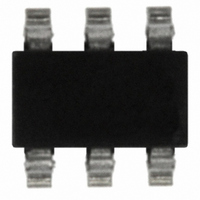LT1719CS6#TRMPBF Linear Technology, LT1719CS6#TRMPBF Datasheet - Page 16

LT1719CS6#TRMPBF
Manufacturer Part Number
LT1719CS6#TRMPBF
Description
IC COMP R-RINOUT SINGLE SOT23-6
Manufacturer
Linear Technology
Series
UltraFast™r
Type
General Purposer
Specifications of LT1719CS6#TRMPBF
Number Of Elements
1
Output Type
CMOS, Rail-to-Rail, TTL
Voltage - Supply
2.7 V ~ 6 V
Mounting Type
Surface Mount
Package / Case
SOT-23-6
Comparator Type
General Purpose
No. Of Comparators
1
Response Time
4.5ns
Ic Output Type
CMOS, TTL
Output Compatibility
CMOS, TTL
Supply Current
4.6mA
Supply Voltage Range
2.7V To 6V
Rohs Compliant
Yes
Lead Free Status / RoHS Status
Lead free / RoHS Compliant
Other names
LT1719CS6#TRMPBFTR
Available stocks
Company
Part Number
Manufacturer
Quantity
Price
LT1719
APPLICATIONS
The input trip points test circuit uses a 1kHz triangle wave
to repeatedly trip the comparator being tested. The LT1719
output is used to trigger switched capacitor sampling of
the triangle wave, with a sampler for each direction. Be-
cause the triangle wave is attenuated 1000:1 and fed to the
LT1719’s differential input, the sampled voltages are there-
fore 1000 times the input trip voltages. The hysteresis and
offset are computed from the trip points as shown.
Crystal Oscillator
A simple crystal oscillator using an LT1719 is shown on
the first page of this data sheet. The 2k-620 resistor pair
set a bias point at the comparator’s noninverting input.
The 2k-1.8k-0.1 F path sets the inverting input node at an
appropriate DC average level based on the output. The
crystal’s path provides resonant positive feedback and
stable oscillation occurs. Although the LT1719 will give
the correct logic output when one input is outside the
common mode range, additional delays may occur when
it is so operated, opening the possibility of spurious
operating modes. Therefore, the DC bias voltages at the
inputs are set near the center of the LT1719’s common
16
V
TRIP
Test Circuit
U
INFORMATION
U
2.7V TO 6V
V
Figure 8. Crystal Oscillator with a Forced 50% Duty Cycle
CC
620
W
2k
220
–
+
LT1719
CRYSTAL (AT-CUT)
1MHz TO 10MHz
C1
0.1 F
U
GROUND
CASE
1.8k
2k
1k
0.1 F
mode range and the 220 resistor attenuates the feed-
back to the noninverting input. The circuit will operate with
any AT-cut crystal from 1MHz to 10MHz over a 2.7V to 6V
supply range. As the power is applied, the circuit remains
off until the LT1719 bias circuits activate, at a typical V
of 2V to 2.2V (25 C), at which point the desired frequency
output is generated.
The output duty cycle of this circuit is roughly 50%, but it
is affected by resistor tolerances and to a lesser extent, by
comparator offsets and timings. If a 50% duty cycle is
required, the circuit of Figure 8 forces a 50% duty cycle.
Crystals are narrow-band elements, so the feedback to the
noninverting input is a filtered analog version of the square
wave output. Changing the noninverting reference level
can therefore vary the duty cycle. C1 operates as in the
previous example while A1 compares a band-limited ver-
sion of the output and biases C1’s negative input. C1’s only
degree of freedom to respond is variation of pulse width;
hence the output is forced to 50% duty cycle. Again, the
circuit operates from 2.7V to 6V. There is a slight duty
cycle dependence on comparator loading, so minimal
capacitive and resistive loading should be used in critical
applications.
LT1636
A1
+
–
200k
200k
100k
0.1 F
OUTPUT
V
CC
1720 F07
CC














